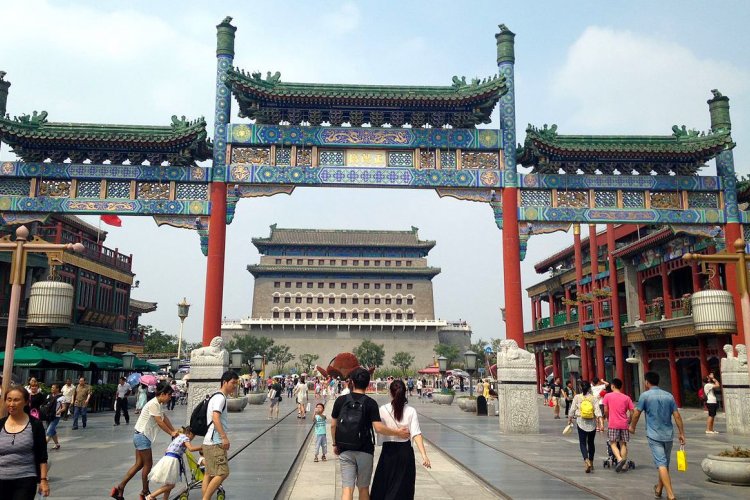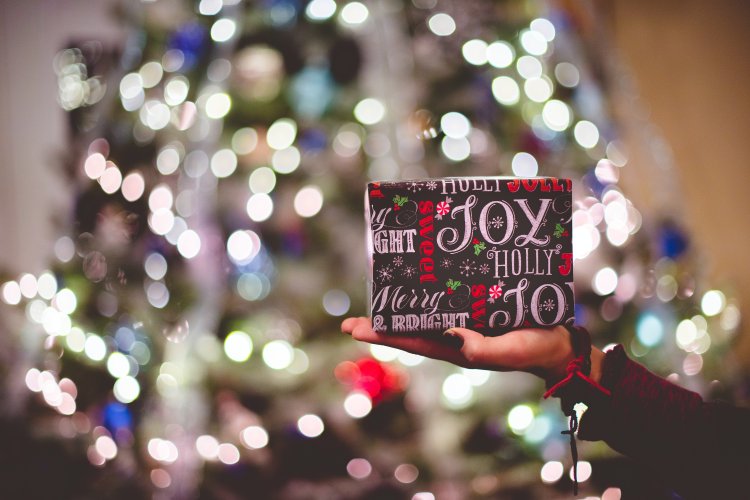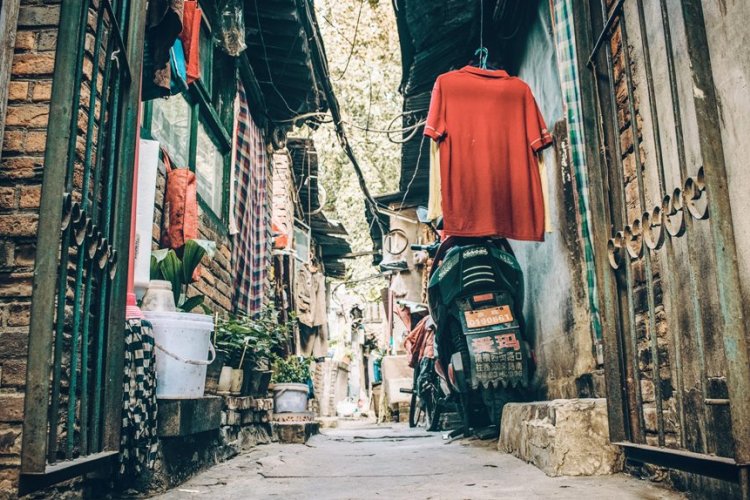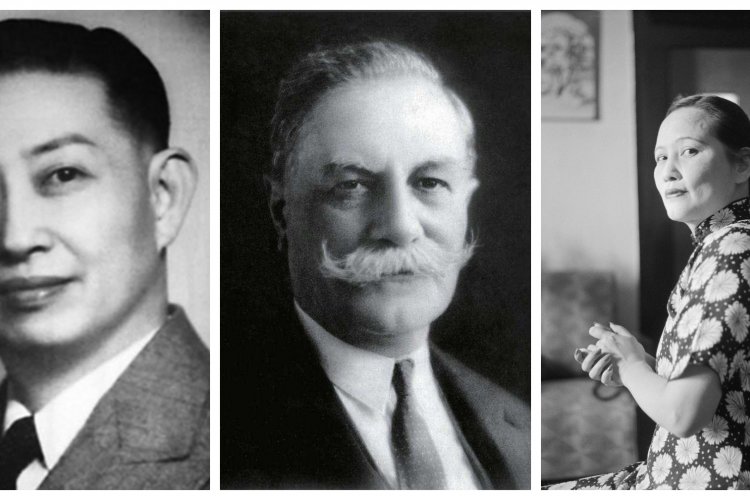Back Alley Bounty: Guide to Beijing's Best Hutongs
Like the Forbidden City and the Great Wall, hutongs are an exclusive feature of Beijing. For more than 800 years, hutongs have formed the bones of Beijing’s inner city, and we suspect their original builders in the Yuan Dynasty (1206-1368) could not have imagined that the complex net woven by these simple alleyways would one day become must-see tourist attractions.
Imperial Hutongs: Hutongs around the Forbidden City
Much of China’s history took place 500 meters east of Tian’anmen tower, where the majestic Chang’an Jie and an unassuming side-street named Nanchizi (南池子) meet. Nanchizi snakes along the length of the Forbidden City, and is mirrored by Nanchang Jie (南长街) on the other side of the complex. The area inside the gate of Nanchizi is flanked on both sides by Changpuhe Park (菖蒲河公园), where several high-end companies and restaurants are hidden. The walls of the hutongs in this area are thicker, and their color more vibrant than any other hutong in Beijing. Huangshicheng (皇史), located 200 meters inside Nanchizi, stores the imperial files for the last two dynasties, the Ming and the Qing, and houses documents over 600 years old. There is no entrance fee, but visitors are requested to be quiet. Along the east side of Nanchizi are several hutongs named after their former functions: the lantern storage alley Denglongku Hutong (灯笼库胡同), satin storage alley Duanku Hutong (缎库胡同), and the china storage alley Ciqiku Hutong (瓷器库胡同). Nanchizi turns into Beichizi (北池子) near the east gate of Forbidden City, and following this road all the way to the west leads to one of Beijing’s most scenic spots, where tourists and wedding parties gather at regular intervals to take advantage of the stunning backdrop. To the east, there is a small hutong named Zhide Beixiang (智德北巷) which leads to a popular stone tablet, engraved with a phrase which was historically used to ward off evil spirits, known as fox fairies (泰山石敢当). These stones have become extremely rare in modern times, and this one is worth seeing before it is too late.
Most Polished Courtyards: Houhai, Gulou, Nanluogu Xiang
At the northwest corner of Jingshan Park (景山公园) you will see a small hutong named Gongjian Hutong (恭俭胡同) which leads to Houhai, one of the most popular and commercialized hutongs in Beijing. These hutongs curve along the bends of the river that runs through their midst, and are some of the few hutongs in the city whose lanes are not straight. Dajinsi Hutong (大金丝胡同) west of Yinding Bridge (银锭桥), is one of the best preserved hutongs in Beijing. To the north of Houhai stand the old Drum and Bell Towers, which were once used to announce the hours, but now overlook some of the neatest and most peaceful hutongs in Beijing. This is the perfect place to experience life at its simplest: old men sitting at tables playing chess, kids running around with their school bags dragging behind them, and old women walking their ancient Pekingese are just a few of the sights that can be taken in. Nanluogu Xiang (南锣鼓巷), just east of the Drum and Bell Towers, is another straight alleyway whose structure has remained mostly unchanged since the Yuan dynasty, but whose interiors are now bustling with cafés, restaurants and shops.
Most Intellectual Hutongs: Guozijian, Fangjia, Wudaoying
The northernmost corner of old Beijing was the land of scholars. The archway leading there is called the “Street of Becoming Virtuous” (Chengxian Jie 成贤街), as scholars were seen as men of high virtue. Educated men were so highly valued in imperial China that they were exempt from corporal punishment, and the stone monument which orders officials to dismount their horses (官员人等至此下马) is an eternal reminder of Beijing’s intellectual past. The other name of this street is Guozijian Jie (国子监街) named after the Imperial University that was home to China’s greatest scholars starting in the Sui Dynasty(581-618). The university which stands here now was built in 1306, when Beijing became the new capital of China. Traditionally this university enrolled students from eastern and middle Asia, and even Russia, as well as students from affluent families. Now serving as a museum (open Tue-Sun 9am-5pm, RMB 20), Guozijian showcases ancient classrooms, administration offices, and even a hall where every emperor since Qianlong (1735-1796) has given a lecture. The Confucius Temple sits right next door and floods with students and parents lighting incense and praying for good test grades during college entrance exams every year. Two other hutongs in this area – Wudaoying (五道营) and Fangjia (方家) hutong north and south of Chengxian Jie are becoming more and more popular for their trendy food, bars and shops.
The Old Sanlitun: Qianmen, Dashila’r
Just a stone’s throw away from Tian’anmen and the Forbidden City is the area where Beijingers used to eat, drink, shop and have fun. With hundreds of restaurants and shops, the Qianmen area was the central business and shopping center during the Ming and Qing dynasties. Many time-honored shops and restaurants, including the most famous Peking duck restaurant, Quanjude (全聚德), and TCM store, Tongrentang (同仁堂), started and succeeded here, and it is also considered the origin of Beijing snack foods. Many snack shops remained in their old location in Menkuang Hutong (门框胡同), Xianyukou Hutong (鲜鱼口胡同), and Langfang Toutiao (廊坊头条) until the Qianmen area was renovated. The price of building a new Qianmen Dajie (前门大街) was the inclusion of international businesses like Starbucks and H&M, and the end of a lot of traditional restaurants and shops that couldn’t afford the rent. Apart from restaurants, the hundred-year-old Tongrentang pharmacy, Ruifuxiang silk store (瑞蚨祥) and Neiliangsheng shoe store (内联升) remain open on Dashila’r. The China Film Museum, which is also located here, chronicles the early beginnings of Chinese film. Qianmen Xiheyangjie (前门西河沿街) and Xijiao Minxiang (西交民巷) were once Beijing’s financial street and hosted many of China’s earliest banks. The western style building located here now serves as the Qianmen branch of Bank of China, and is neighbored by the China Ancient Money Museum (中国古钱币博物馆). West of Dashila’r is Liulichang (琉璃厂), a street that is dedicated to selling antiques, calligraphy and paintings. Baishun Hutong (百顺胡同), Yanzhi Hutong (胭脂胡同), Hanjiatan (韩家潭), and Shaanxixiang (陕西巷), all of which are also located in this area, are known for their top-class service, tea ceremonies, and musical performances.
Most Diplomatic Alleys: Dongjiaominxiang
East of Qianmen and Tian’anmen square is Dongjiaominxiang (东交民巷), which was the bank of a canal used for sending food between northern and southern China during the Yuan dynasty. It was originally called Jiangmi Xiang (江米巷) because it used to be the street where people traded glutinous rice. During the Ming and Qing dynasties, authorities set up hotels to host foreign ambassadors, and after the Opium War (1840-1842), many countries started to establish embassies there. In 1901, these embassies were forced to build a six-meter tall wall around their compounds, which remained there until January 1950, when the new China was established. China has torn down many of these buildings since the 1980’s, but some remain. Number 36 Dongjiaominxiang was Citibank, 27 Dongjiaominxiang was the Russian embassy, 19 Dongjiaominxiang was the French post office, 15 Dongjiaominxiang was the French embassy, A13 Dongjiaominxiang was the Catholic church of St. Michael Earl, 1 Taijichang Dajie was the Italian embassy, 5 Zhengyilu was the British embassy, 11 Qianmen Dongdajie was the Dutch embassy, and 23 Qianmen Dongdajie was the American embassy.
Superlative Hutongs
Longest Hutong: Dongjiao Minxiang near Qianmen (东郊民巷) About 3km
Shortest Hutong: Yichi Dajie near Qianmen (一尺大街) About 10m
Widest Hutong: Lingjing Hutong near Xidan (灵境胡同) 32.18m at widest
Narrowest Hutong: Qianshi Hutong near Qianmen (钱市胡同) 0.4m at narrowest, 0.7m on average
Most curved Hutong: Gongzi Hutong near Qianmen (弓字胡同) used to be called 9 turns Hutong (九道弯胡同)
Oldest Hutong: Zhuanta Hutong near Xisi (砖塔胡同) more than 700 years old






